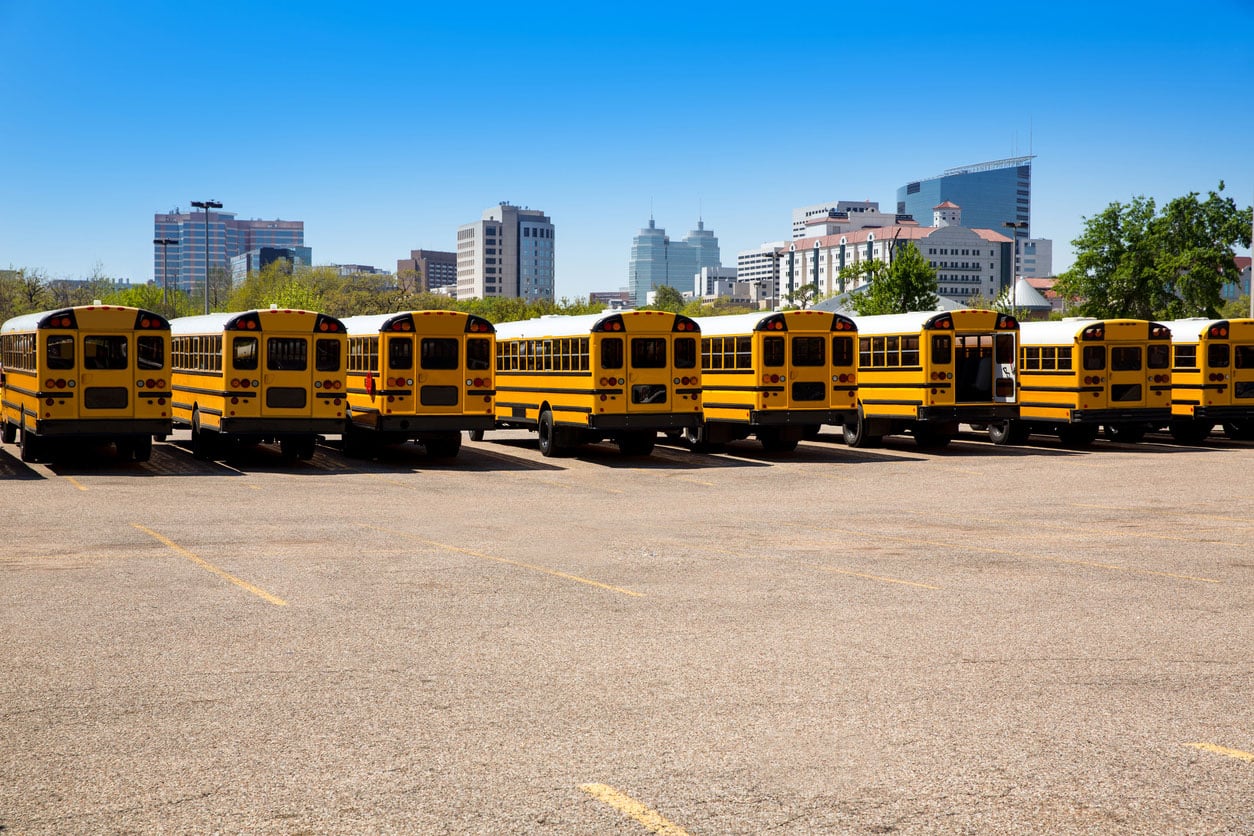Ever been stuck behind a school bus on your way to work and wondered when it’s okay to pass? Or maybe you’ve slammed on your brakes when you spotted those flashing red lights ahead? You probably aren’t the only one who’s done this. But there are important Texas school bus laws you must be aware of.
When Do You Need to Stop for a School Bus?
Here’s the deal: If you see a school bus with red lights flashing and that stop sign arm extended, you MUST stop. This applies to traffic in both directions – unless you’re on the opposite side of a divided highway with a physical median or barrier between you and the bus.
Think of it this way: Those flashing lights are like a force field protecting kids as they cross the street. Breaking through that force field isn’t just dangerous—it’s expensive.
First-time offenders face fines between $500 and $1,250. Get caught again? You might lose your license altogether. Police take this seriously because illegal passing is one of the top reasons kids get hurt around buses.
How Close Is Too Close?
There’s no “official” distance you need to maintain behind a school bus, but experts recommend keeping at least 10-20 feet back. If that bus stops suddenly, you need enough time and space to react without causing a pile-up.
Pay attention to those yellow flashing lights—they’re the bus driver’s way of saying, “I’m about to stop!” When you see yellow, start slowing down and prepare to halt completely when the red lights come on.
Can a Bus Block Traffic?
While school buses can’t just park in intersections for no reason, they do get priority when picking up or dropping off students. Sometimes this means brief delays at intersections.
Just remember: That minute or two of waiting feels a lot longer than it actually is. Taking a dangerous chance to save a few seconds isn’t worth risking a child’s life—or your driving record.
Speed Limits for School Buses
School buses follow different speed rules in different areas:
- On highways: Usually 50-55 mph when carrying kids
- In cities or school zones: They follow posted limits (typically 20-30 mph)
- Buses with special commercial governors: May go up to 60 mph on specific highways
Remember that if YOU speed near a school bus or in a school zone, your fine could be doubled. That 5-minute time-saver could cost you hundreds.
What Happens If You Break the Rules?
Texas doesn’t mess around with school bus safety. Here’s what you could face:
- Passing a stopped bus: $500-$1,250 for first offense, possible license suspension for repeat offenses
- Speeding near a bus: Steep fines plus points on your license
- Reckless driving around buses: Potential misdemeanor charges, hefty fines, and maybe even jail time
The system is designed this way for a reason—keeping kids safe is worth more than your convenience.
How Long Can Kids Be on the Bus?
Parents often wonder: “Is there a limit to how long my child can be stuck on that bus?”
While Texas doesn’t have a hard-and-fast rule, the Texas Education Agency suggests students shouldn’t spend more than an hour each way under normal conditions. This might differ in rural areas a bit, but districts try to keep travel times reasonable regardless.
If your child’s bus ride seems excessive, it’s worth checking your district’s transportation policies.
Bottom Line: What Every Texas Driver Should Remember
- Always stop for a bus with flashing red lights unless you’re on the opposite side of a divided highway
- Keep at least 10-20 feet between you and a school bus
- Never try to pass a stopped school bus (unless you have $1,000+ to spare on fines)
- Follow school zone speed limits (20-55 mph depending on location)
- Have patience when buses are loading or unloading kids
Think of it this way: The most precious cargo on Texas roads isn’t in your vehicle—it’s in those big yellow buses. All Texas should do our part to keep them safe. Need more specifics? Visit the Texas Department of Transportation or contact your local school district for their policies.





